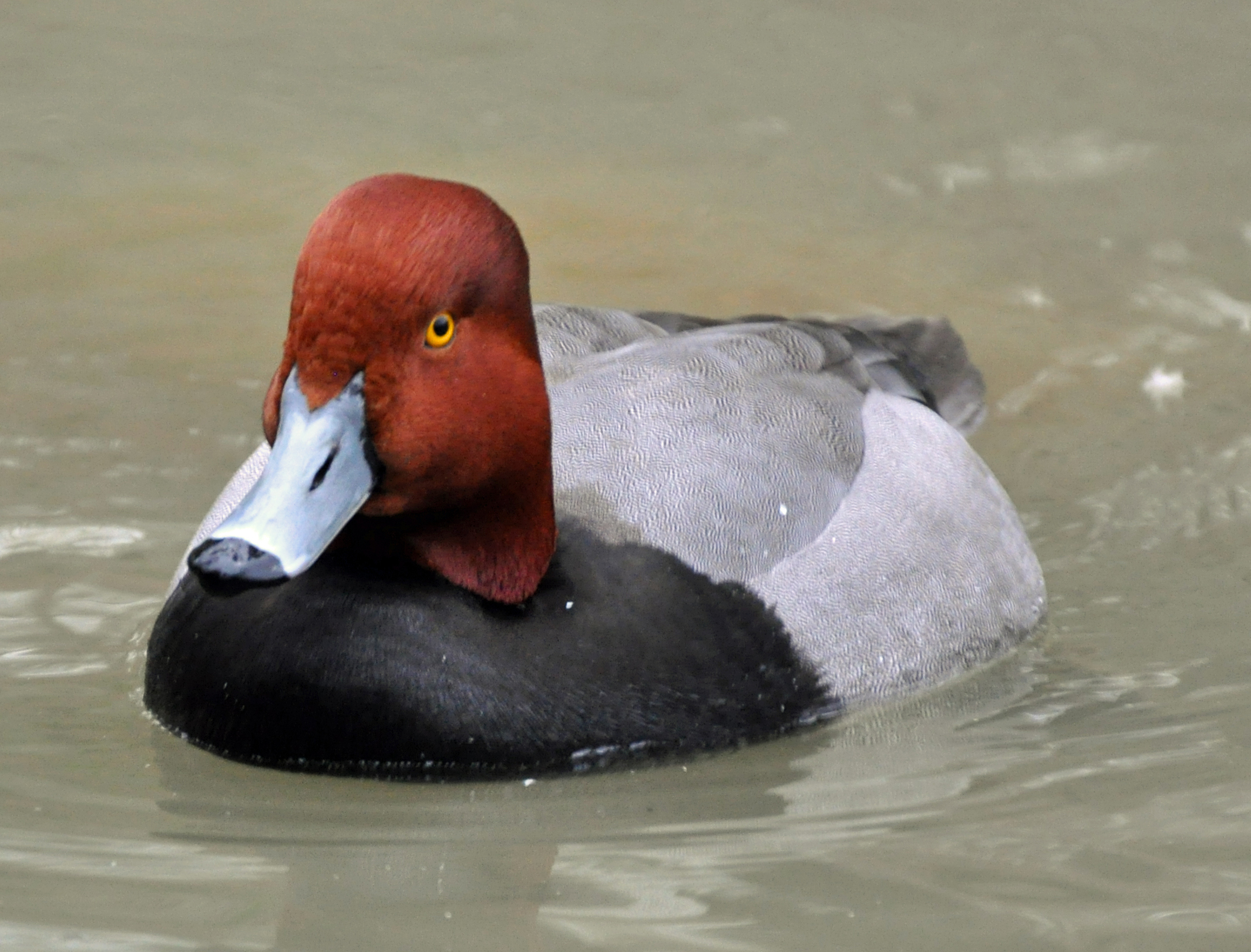
Redhead(Aythya americana)
Phylum —chordata
Class — aves
Order — anseriformes
Family — anatidae
Genus –aythya
Appearance
The redhead is 37 cm (15 in) long with an 84 cm (33 in) wingspan. Redhead weight ranges from 2.0-2.5 lbs (907-1134 g), with males weighing an average of 2.4 lbs (1089 g) and females weighing an average of 2.1 lbs (953 g).
The redhead is a diving duck specially adapted to foraging underwater. Their legs are placed farther back on the body, which makes walking on land difficult, the webbing on their feet is larger than dabbling ducks and their bills are broader, to facilitate underwater foraging. In addition, they have a lobed hind toe.
During breeding season, adult males have a copper head and neck, with a black breast. The back and sides are grey, the belly is white and the rump and tail are a light black. Male bills are pale blue with a black tip and a thin ring separating the two colors. Non breeding males lose the copper colorand instead have brown heads.
Adult females have a yellow to brown head and neck. The breast is brown, the belly is white and the rest of the body is a grey to brown. The female bills are slate with a dark tip that is separated by a blue ring. Females remain the same color year round.
Habitat
During breeding season, redheads are found across a wide range of North America, from as far north as Northern Canada to the Caribbean. Their preferred areas include the intermountain regions of British Columbia, Alberta, Saskatchewan, Manitoba, and the Dakotas with some small localities in Ontario, Quebec and southern United States. These ducks then migrate south to winter in warmer climates. These areas include southern United States where breeding does not occur and extends to Mexico, Guatemala, Cuba, and the Bahamas.
Behavior
Redheads are excellent divers and use this trait for obtaining food.
Redheads are migratory. By September, the fall migration south has begun. In March, the birds fly back north to begin their breeding season. The ducks migrate in V-formations at great speeds. They will fly for long distances in the morning and evening.
The ducks may be found singly, in pairs, or in flocks of 5 to 15. At popular wintering areas, they can be found by the hundreds and sometimes thousands.
Diet
Redhead diet is mainly composed of vegetable matter. It dives to the bottom of the body of water to feed on aquatic plants and mollusks and dabbles on the surface of shallow marshes to locate insects. Prior to the egg-laying season the females up their animal matter intake to increase their protein levels. At this time about 77% of their diet is animal related. About half of the duckling's diet is made up of animal matter to supply the nutrients needed to grow.
Foods commonly eaten include: shoalgrass, pondweeds, muskgrass, sedges, grasses, wild celery, duckweeds, water lilies, grasshoppers, caddisflies, midges, water fleas, scuds, water boatmen and snails.
Reproduction
Redheads flock together on lakes and other bodies of water but will migrate in pairs, which are formed in December or January through elaborate courtship rituals.
Once copulation is completed, female redheads begin forming nests. They are built with thick and strong plant material in emergent vegetation, such as hard stem bulrush, cattails and sedges, over or near standing water. Redheads to not defend their territory or home range and are actually very social while in their breeding ground.
Some redheads lay their eggs in other ducks’ nests, including the canvasback, ring-necked duck and greater and lesser scaups. Brood sizes range from 5-7 young, with the mother abandoning the chicks at 8 weeks old, before they are capable of flying. They remain flightless for another 2–4 weeks.
In captivity
The average lifespan is up to 20 years.
After the breeding season, the males shed feathers and stop flying for a month. During this time period, they need a warm extension on land. Also, these birds need a pond in the pen.
The diet of the birds should consistof mainly aquatic plants with some mollusks, aquatic insects and small fish.Grated carrots and cabbage should be also given. Cabbage contains a lot of sulfur and makes feathers grow faster.
To breed offspring, redheads are set up in houses that are located in their place of residence.
If the birds live in the open air, the keepers clip their wings or enclose the space,where birds live, with a grid on top.
 Russian
Russian
 English
English
























